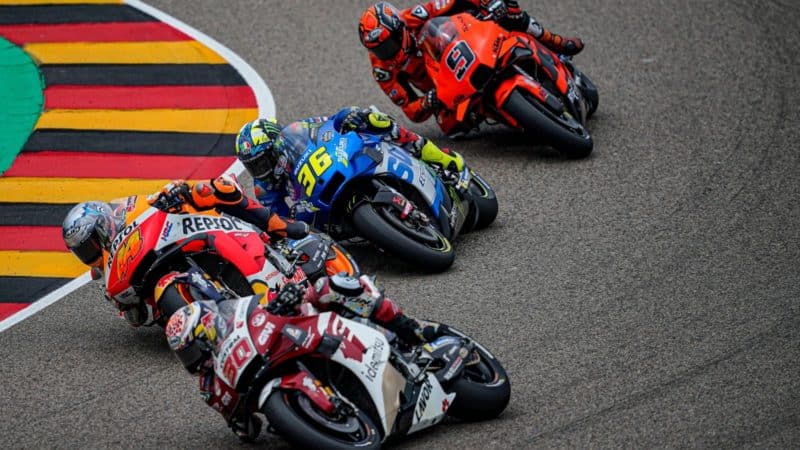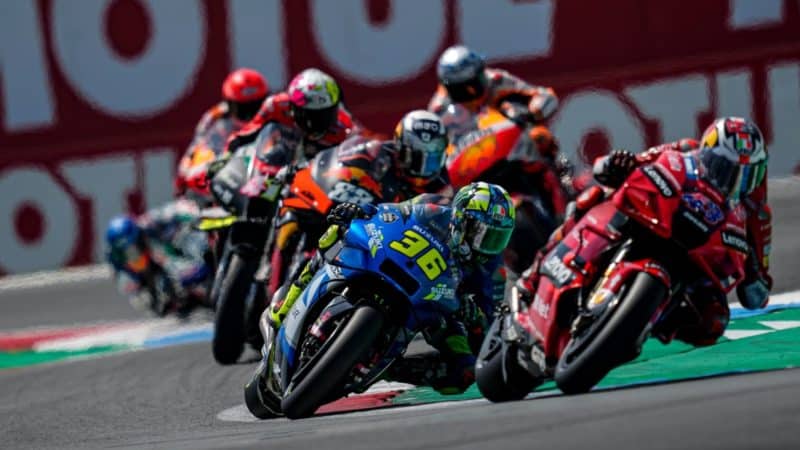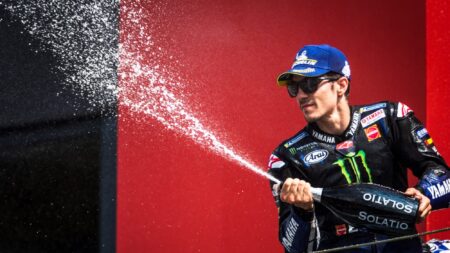“We concentrate on qualifying because if we make a bad qualifying it’s impossible for us,” said Quartararo at Assen.
Second, a holeshot device will gain Suzuki a couple of tenths on the getaway from the grid and the charge into turn one.
But how important can the first few seconds of a 40-minute race be? It’s hugely important because where your position at the first corner has a massive effect on what happens over the next 25 laps.
If you’re in the lead group from the start you can maintain your pace through the race and manage the tyres better, because when you’re fighting to pass a bunch of rivals you’re more aggressive on the throttle, so you spin the rear tyre more than you’d like, and you’re more aggressive on the brakes, so you overheat the front tyre. And even if you do make it through the pack and start fighting with the lead group you’ll be in trouble, because your tyres are in a bigger mess than theirs, so you’ve used up all your ammunition.
The shapeshifter is just as important during the race. The rider who has a shapeshifter can pass other riders more easily, while the rider who doesn’t have a shapeshifter will find he is easier to pass.
Suzuki has been working on its own shapeshifter for a while and there’s a chance the GSX-RR may be armed with the device when MotoGP returns from its holidays at Red Bull Ring in August.
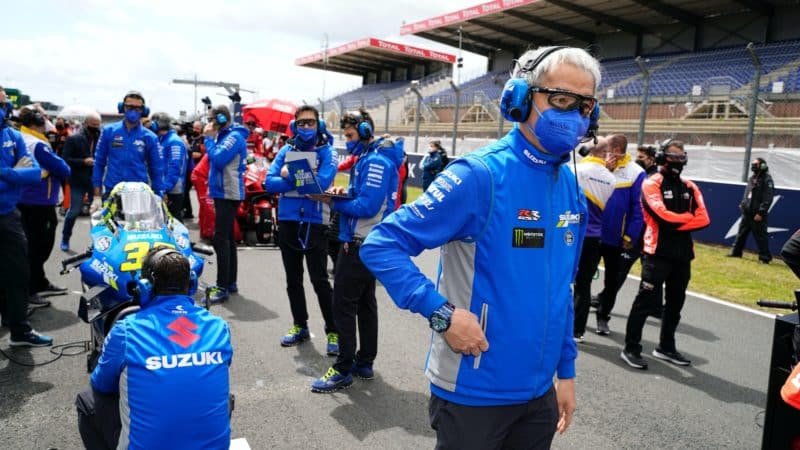
Shinichi Sahara at Le Mans, where Mir and Rins qualified 14th and 15th
Suzuki
“I hope so – I’m waiting for an early Christmas from Santa Claus!” says Shinichi Sahara, Suzuki’s MotoGP project leader and team director. “Even without this device we can manage to make good lap times but not having the device makes it difficult for us to overtake, so it’s a small detail but it has a big effect. Its importance is different track by track, depending on the layout.”
Suzuki test rider Sylvain Guintoli spent two days testing GSX-RR updates at Misano before last weekend’s Dutch TT but Sahara says he didn’t evaluate the device there.
“Right now we are only testing in Japan,” he adds.
Shapeshifters are very complex pieces of kit. Electronically adjustable suspension is banned in MotoGP, so everything must be done mechanically and hydraulically. The rider turns a switch on the triple clamp, which hydraulically activates a secondary hydraulic unit near the shock, which somehow bleeds the shock and compresses the spring, by more than half its stroke. This requires lots of pressure, perhaps 100 bar. So how is this pressure obtained? Presumably by a pump, but what drives that pump? The engine? What else, if electronics aren’t allowed?
“There are many challenges with this technology,” says Sahara. “Of course, reliability because of all the hydraulic controls. We have seen some other manufacturers have problems with their systems working incorrectly, which shows that you can throw away a whole race. And this is also important for safety.”
Mir’s frustration at the delay has been obvious at recent races, where he’s had to fight his way through the pack while the leaders disappear out front. He’s scored three podiums so far – 4.9 seconds behind the winner at Portimao, three seconds back at Mugello and 5.7 back at Assen – so it’s easy to see how the lack of the device is damaging his title defence.
Of course, Suzuki’s issues aren’t only related to this gadget.
When the factory switched from V4 power to inline-four power in 2015 its number-one priority was to create a very balanced motorcycle, which allows riders to be fast in all conditions and looks after its tyres well.
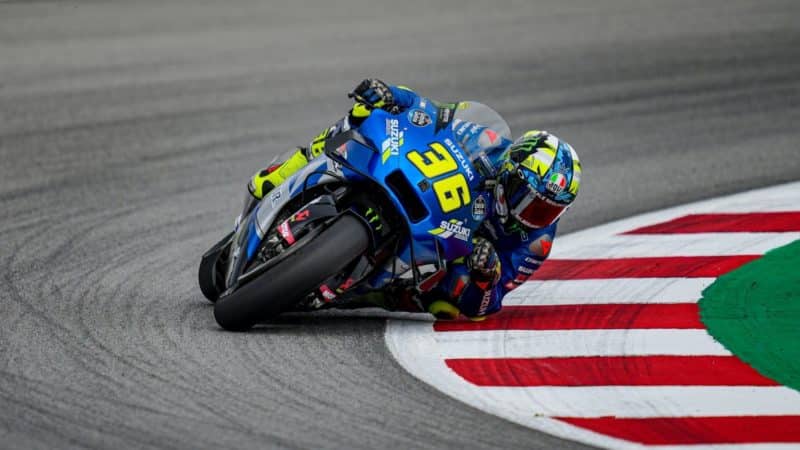
Mir can be super-fast when he has a clear track ahead
Suzuki
The GSX-RR does indeed conserve its tyres well, but in recent years it’s become obvious that a bike that wraps its tyres in cotton wool for 25 laps isn’t so good at taking out the maximum from its tyres over one or two laps in qualifying.
“Our priority is always the race,” says Sahara. “But sometimes a bad grid position makes race management and tyre management quite difficult. We already have some ideas to improve qualifying and sometimes they work, like at Sachsenring, where Álex would’ve been second row at least, if there hadn’t been yellow flags.”
Rins usually qualifies better than Mir, but so far this year his races have been a disaster, with three crashes and only two top-ten finishes.
“Overall I’m not quite happy with our results but also it’s frustrating because the results sheet doesn’t reflect our real performance,” Sahara continues. “For sure our competitors have improved a lot from last year. We have also improved but maybe our step has been smaller than other manufacturers.

